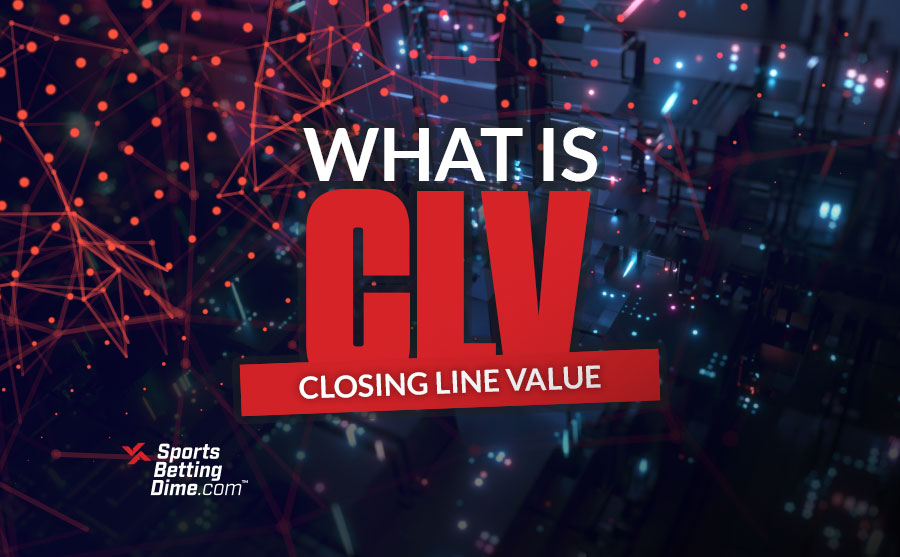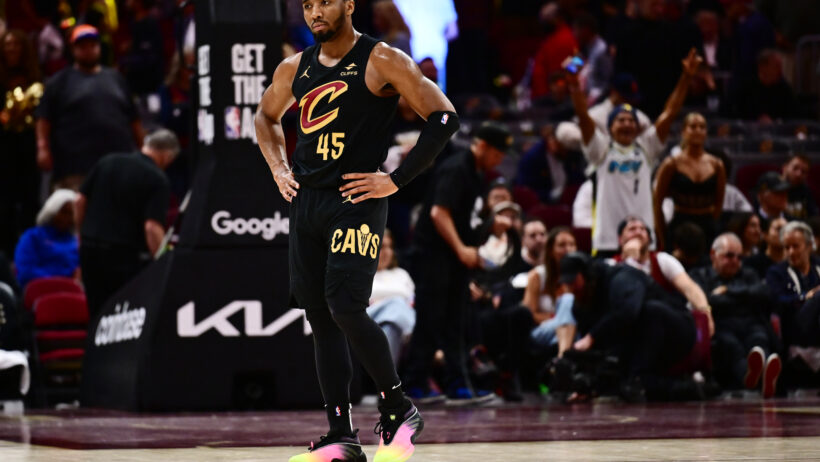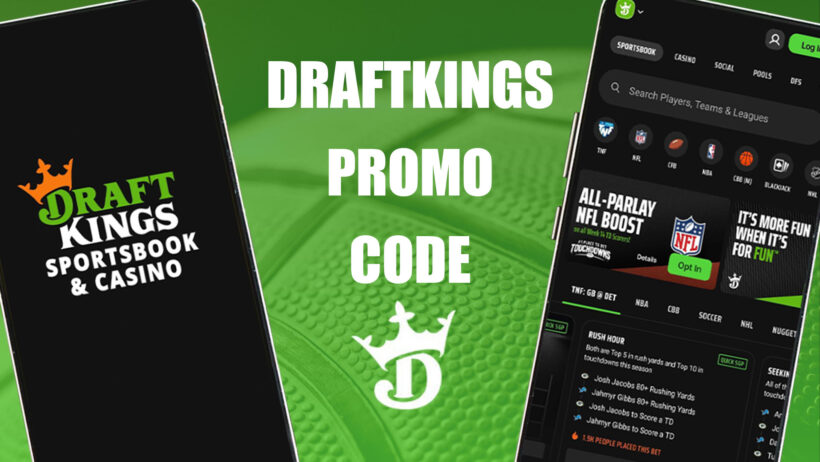What Is Closing Line Value? CLV in Sports Betting 101

Most sports bettors know the importance of line shopping, and keeping a close eye on closing line value (CLV) is a crucial component of finding the best prices.
So, what exactly is closing line value? CLV refers to the value of a wager in relation to where the lines close before a game.
For example, let’s say you bet on the Denver Broncos to cover the spread at -3 on Tuesday. If the line closes at Broncos -7 just before kickoff, you’ve got positive closing line value.
In this scenario, you only need the Broncos to win by more than three points to win your bet, while anyone who wagered later in the week needs them to win by more than seven points. A reverse scenario where you bet the team at -7, and then the line closes at -3, you’re sitting on negative CLV.
Here’s a full breakdown of CLV, along with tips on how to integrate it into your betting strategy.
Jump to:
- How to Calculate Closing Line Value
- Other CLV Considerations
- Importance of Closing Line Value
- Closing Line Value FAQs
How to Calculate Closing Line Value
Calculating your closing line value has two key components. The first component is where the lines were sitting when you placed your wager, and the second in where the odds were set when betting closed on a particular event.
However, there are three different ways of looking at CLV and each of these methods come with alternative mathematical approaches:
- “Dollars and cents”
- Expected value
- Win probability percentages
The important thing to remember is if you get favorable odds when you place your bet compared to what the lines close at, you’re getting good CLV no matter what.
Let’s run through each of these three ways to highlight CLV.
“Dollars and Cents” CLV
This most casual approach to CLV is fast and easy, however, it’s limited to moneyline betting exclusively. It’s usually referred to as the “dollars and cents” method.
This approach is easy to understand because it focuses on how much more you win through CLV. If the odds get worse after you’ve placed your wager, you’re clearly winning more money by getting in early.
In an event where you wager $100 on +200 odds, and those odds shift to +150 by the time the market closes, you end up winning a total of $50 more than someone who wagered on the cusp of the closing lines. $50 is half of your $100 wager, so some bettors would look at this as a 50 “cent” win in CLV terms.
Sharp bettors look at the dollars and cents of CLV in a slightly different way. Instead of focusing on how much more you win with positive CLV, sharps will use CLV to help mitigate potential losses.
It’s not about wether your play wins after getting a better price. It’s about the dollars and cents you save on LOSSES.
That’s why CLV is & will always be important.
— Proph™️🔮 (@SportsProphet__) November 11, 2021
Sharps usually risk whatever it takes to win one whole betting unit on each wager they make. They will wager as much as needed on minus odds, say -120 odds, just to get a full unit. Using -120 odds as an example, sharps will risk $120 in order to win $100, thereby collecting a full unit if they’re typically putting down $100 on each wager.
This is where CLV helps sharp sports bettors. If they miss the -120 odds and these lines move to -140, the sharp sports bettor now must wager $140 to win the $100 total. Had they played the CLV advantage when it was available, they’d only be risking $120 to get that whole betting unit of $100.
Perhaps you want to go even further in your closing line value calculations by breaking down break-even probabilities. Two popular ways of doing this is by looking at win probability percentages and expected values.
Win Percentage Closing Line Value in Sports Betting
Another way of looking at CLV in moneyline betting is through a “win probability percentage” method. This method compares win probability percentages of two lines to determine the closing line value.
Let’s say you place a wager on moneyline odds of -120. This bet comes with an implied win probability percentage of 54.55%. If the odds get longer and move to -170, the implied win probability has moved to a percentage of 62.96%.
Win probability CLV: 62.96% – 54.55% = 8.41%
In this scenario, you’re getting 8.41% better value on your wager placed on -120 odds at an implied probability of 54.55%. While the odds of you winning you bet got longer, you ultimately won over 8% more in CLV by placing this wager before the lines moved to -170.
The odds got longer and win probability increased, but as someone who got in at -120 odds, you increased your CLV.
This is just one other way of quoting your CLV, and you can break it down even further by looking at expected value.
Expected Value CLV
Using the scenario above, we’ll take the win probability increase of 8.41%, and divide it by the break-even probability in your initial wager to come to an expected value figure.
The expected value approach takes that 8.41% increase and divides it by the break-even probability of your initial wager. In this scenario, your return is 8.41% / 54.55%, which equals an increase in expected value CLV of 15.4%.
Again, this is just one more way to highlight various aspects of your CLV on line movement from -120 to -170 odds.
Using an expected value approach requires some math, but it’s important if you want to be a sharp sports bettor. This method is typically referred to as an “expected value” approach, because it highlights the true value increase of getting in early on favorable lines.
CLV Calculator: Closing Line Value Formula and BEP
Calculating CLV for moneyline bets with the expected value or win probability percentage approach relies on break-even points. Spread and totals betting is a bit more complicated, but we’ll get to that in just a minute.
Break-even points are relatively simple, and every set of odds has a specific BEP. For example, a +100 line has a set BEP of 50%, or in other words, you need to win half your bets on +100 odds to break even. In this scenario, you need to win more than half your wagers to start making a profit.
Here’s how to calculate BEP:
- With favorite odds, divide the price you see by the sum of that price plus 100. With -120 odds, that’s 120 divided by 220, which works out to 54.5% BEP.
- With underdogs, divide your price by the sum of that price plus 100. With +120 odds, you divide 120 by 220, which works out to 0.545. Then, grab a calculator and punch in 1 minus 0.545, which comes to 0.455, or in other words, a 45.5% BEP.
How to calculate CLV:
- Identify your price and the closing line price
- Calculate both BEPs
- Subtract the second from the first
- Divide by the first BEP
If math isn’t your thing, you can also find multiple sports betting calculators online that will automatically work out BEP and CLV values for you.
Other CLV Considerations
Some additional considerations when calculating CLV figures is push probabilities for point spread and totals betting, along with vigorish details.
Push Probabilities
If you’re betting on moneyline markets, you don’t need to worry about push probabilities. This only comes into play if you’re wagering on point totals or against the spread.
The Whips escape with the win, but fail to cover the -1.5 for bettors who took them against the spread after the line flipped.
✅️ Whipsnakes ML
✅️ Whipsnakes +1.5
✅️ Chaos +1.5
✅️ Under 22.5P.S. Congrats to all you Whips +1.5 and Chaos +1.5 middlers! pic.twitter.com/LdgTUJuOMD
— Bet On Lacrosse (@BetOnLacrosse) June 4, 2022
Push probability refers to how often a spread will push, resulting in your wager being refunded. If you’re investigating CLV for totals or ATS betting, you need to determine push probabilities for figures impacted by line movement.
You can either go through the complicated math yourself, or find any one of the numerous price point calculators available online for determining push probability. Once you’ve factored in these details, calculating CLV works just the same as mentioned above.
No-Vig CLV
Calculating CLV with or without the vig is entirely up to you. You can remove the vig from any of the three main approaches mentioned above. In theory, the expected value approach with vig removed is the best way to estimate your CLV return over the long run.
To remove the vig, you need to divide the implied probability of your price by the sum of the two implied probabilities. For example, if your -120 wager moved to +100 odds, you would divide the implied probability of -120 odds (54.55%) by the sum of both implied probabilities (54.55 + 50) to reach a no-vig result.
In this case, the final outcome would be 52.17% no-vig implied probability. Using our odds converter is a great way to quickly get results for implied probability percentages on any odds.
Once you understand how the vig works, removing it from your CLV calculations is relatively simple.
Importance of Closing Line Value
The importance of CLV is obvious anytime there’s dramatic line movement. There’s no explanation needed if you win $50 additional dollars by getting favorable odds before the lines close.
Picking up small wins over a long period of time is where CLV tactics really shine.
Let’s say you typically wager with $10 betting units. If you find +120 odds just before they close at +110, the extra dollar you won through CLV in this instance might not seem like a lot. However, if you manage to find these small victories over time, you’ll be padding your bankroll significantly in the long run.
Integrating this small victory strategy may not seem like much initially, but start piling them up and you’ll notice a difference eventually.
How to Maximize CLV
Beating the closing line isn’t easy, but there’s a few different things you can do to maximize closing line value:
- Open multiple sportsbook accounts. Checking in with as many of the best sports betting sites as possible will help you find the most favorable odds for maximizing CLV.
- Pay attention to the news cycle. Breaking developments like injuries and suspensions can have a big impact on line movement, giving you the opportunity to maximize CLV.
- Start line shopping as early as possible. Maximizing CLV is easier when you have more time to track line movement.
- Understand that the public moves lines, and that you can learn to read the public sports bettors. A disproportionate amount of money coming in on one side of the wager forces a sportsbook to make the other side more enticing, causing line movement.
Reading the public is a difficult concept to execute when anticipating line movement, but there are a couple things to keep in mind. The public often bets with their hearts and not their head, making it difficult to find value on popular teams like the Dallas Cowboys and Toronto Maple Leafs. The same thing goes for specific players like Patrick Mahomes, Justin Herbert, or Kevin Durant and Kyrie Irving with the Brooklyn Nets.
These teams and players that have the public gushing over them often see significant line movement in their favor. In order to find positive CLV on these examples, you’d want to bet them early in the week, or wait until closer to closing if you want to bet against them.
Ultimately, making winning bets is the best way to maximize closing line value, but that is much easier said than done. As always, make sure you’re wagering responsibly.
Closing Line Value FAQs
Still have questions about CLV? Here are some quick answers to closing line value FAQs:
What is closing line value (CLV) in sports betting?
Closing line value refers to the price a sports bettor gets on a set of odds compared to what the lines close at. If they get better odds, their CLV is positive.
Is closing line value important?
Yes, closing line value is an important strategy for padding your bankroll. This is especially true if you’re placing many wagers over a long period of time.
What does last line available mean?
Last line available refers to the final price on a set of odds before wagering is halted prior to the start of any given sporting event.
What is closing line value percentage?
Closing line value percentage is just one way of breaking down CLV figures. This is typically seen with a win probability or expected value approach to CLV.
Are there any programs for closing line value?
Yes, there are numerous online calculators you can find for determining closing line value figures.

Evergreen Manager; Sportsbook Expert
Following a sports journalism career with his work appearing in outlets like theScore, The Province, and VICE Sports, Patrick moved into the world of content marketing to bridge the gap between great writing and SEO success. He’s brought that same mindset to lead evergreen content efforts at SBD.



